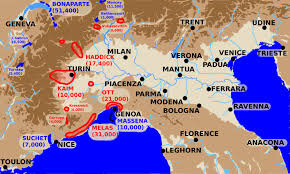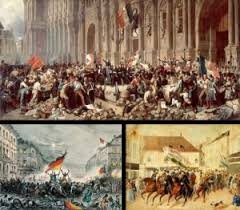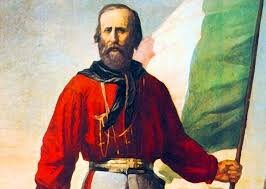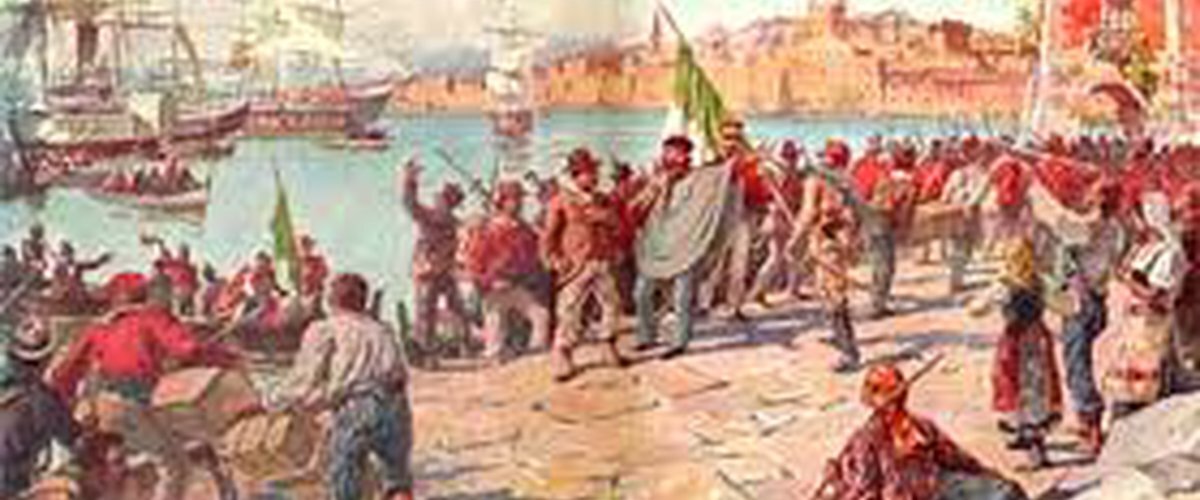The Father of Modern Italy: Giuseppe Garibaldi and the Italian Unification
When we think of Italian history, we of course think about the Roman Empire, and how it turned the Mediterranean Sea into a “Roman Lake”. Now the next thing that comes to mind is the Fascist state that supported Adolf Hitler led by Benito Mussolini. What happened in between is often not discussed or studied. The key reason why is that there was no Italy! Ever since the fall of the Western Roman Empire, a unified nation of Italy did not exist. Instead, the Italian Peninsula was controlled by City-States that usually served as Proxy Wars for the powers of Europe. However, the people of Italy wanted a unified nation, and the sentiment of Italian nationalism ran strong through the boot-shaped land. Italians made several attempts to throw off foreign rule and unite the country but it would not be until a rabble-rouser named Giuessepe Garibaldi entered the scene. Read on to read all about Italian Unification and Giussepe Garibaldi and the founding of Modern Italy.
Background: Post-Roman Italian History
Immediately following the collapse of the Western Roman Empire the Italian Peninsula came under the control of the Ostrogoths to form the Ostrogothic kingdom. While this occurred, emperor Justinian I of the Byzantine Empire sought to restore the Roman empire by bringing most of Europe under Byzantine Control. To begin his grand scheme, Justinian set his eyes on Ostrogoth controlled Italy, and the Gothic War (535-554) began. The Gothic War saw short-term success for Justinian and the Byzantine Empire, but long-term damage to Italy and dreams of a new Roman Empire. Justinian’s forces were able to conquer some parts of Italy, but in the process, set ruin to the Italian Peninsula. It would take a long time for Italy to truly recover. Justinian’s control of a ravaged Italy proved temporary as an invasion of the Lombards, a German tribe, resulted in losses of most of Italy. Italy would remain under Lombarian control for 200 years, and Byzantium ultimately lost all of its Italian possessions. Lombardian dominance in the treason was broken by an invasion of the Franks, a germanic people who controlled Modern-Day France. Frankish forces gave much authority to the Pope, and the Papal States, a key player in our story was born. After Chalremnage’s short-term control of CEntral Europe, the Italian peninsula fell into disorder, as Communes took hold of Northern Italy, and the Emirate of Sicily, an Islamic Kingdom, took control of parts of Southern Italy. In 1130, a group of Normans (yes the very same Norman who conquered England,) overthrew Islamic rule and established the kingdom of Sicily. The 12 and 13 centuries mark the period when city-states dominated the Italian Peninsula. These city-states threw off Feudalism and thrived off of the early capitalist-Esque economy of trade. While these city-states thrived, they fought with each other constantly contributing to the defining characteristic of political instability. In 1494, the period of city-states came to a scr4eaming halt as foreign powers began to sue Italy as a battle royal for Supremacy of Europe, known as the Italian Wars. These wars devastated Italy and further shattered the peninsula into disunion. Spain gained control of the Kingdom of Naples and created Habsburg hegemony in Italy. Throughout the next two centuries, Italy would face intense competition between France and Spain over who could control the Peninsula. Italy was seemingly caught in a perpetual state of warfare and chaos.
Map of the Italian Peninsula circa 1493 (D. means Duchy)
Background: Napoleonic wars
Italy played a key role in the Napoleonic wars, serving as a battlefield between Napoleon’s forces and the Austrian Empire. Northern Italy fell ravage to Napoleon’s “let the army live off the land”. Napoleon’s armies took control of Northern Italy and then attacked Austria through Italy. Causing Austria to sue for peace. The Italian campaign was a major success for Napoleon. However, Italians resented such strong foreign influence, and the experiences during the Napoleonic war helped push Italy closer to nationalism and calls for a united Italy.
The Italian campaigns of the Napoleonic Wars
Background: 1848 Revolutions
Attempts at Italian unification fall into the larger historical context of the 1848 revolutions. The 1848 revolutions were a series of rebellions against the conservative political institutions that dominated Europe. By “conservative” I don’t mean like the Republican Party, but conservative, as support for monarchies, and little autonomy for the people. The rebels called for liberal reforms. By liberal, I don’t mean Bernie Sanders, I mean liberal like enlightenment thinkers. Calls for democracy separation of church and state, greater rights for the people. The 1848 revolutions were mostly unsuccessful, as their efforts were either crushed by the ruling institutions or later devolved into an undemocratic system. The French 2nd Republic only lasted three years before becoming the 2nd French Empire. The Italian revolutions were unsuccessful but showed the strong penchant for a united early and weaknesses in the old system.
The 1848 Revolutions that called for Liberal reform throughout Europe
Background: Garibaldi early life
Ok, so that was a lot. Let’s talk a little about the man who would help redress 13 centuries of a disunited Italy. Giuseppe Garibaldi. Take a guess of where Garibaldi was born. If you guessed somewhere in Italy, you're wrong. Garibaldi was actually born in Nice, the French city on the Mediterranean. Nice was conquered by the French 1st Republic, but when little Giuessepe was 7 his homeland became the territory of the King of Sardinia. Garibaldi was drawn to the open seas and began life as a merchant. It was during his time on the seas that he first came across prospects of a unified Italy. Garibaldi met Giuesseppe Manzizni, a key member of a secret Italian nationalist group known as Young Italy. Inspired by these ideas, Garibaldi took part in a short-lived rebellion and ultimately futile revolution in 1834. As punishment, Garibaldi was sentenced to death. To avoid an untimely death, Garibaldi fled to Marseille and hopped a ship to Tunis. From there, Garibaldi would wind up in a most unlikely destination: The sprawling Empire of Brazil. While in Brazil, Garibaldi became active in Brazillianian politics, joining the cause of the Riograndenese republic in the Ragamuffin War. The Ragamuffin war was a secession effort by the Brazilian state of Rio Grande de Sul. While the Ragamuffin war would last until 1845, Garibaldi abandoned the cause and in 1841 and moved to Uruguay. Garibaldi got involved in the Uruguayan Civil War, supporting the rebelling Colorados. Garibaldi was a principal figure in the siege of Montevideo, helping the embattled city survive. In 1848, political agitation arose in Italy and Garibaldi felt it was time to return home. Garibaldi returned to Italy with 60 men and a passion to unite his homeland.
Giuseppe Garibaldi
Garibalidis’ impact
Garibaldi could not have picked a better time to arrive back in Italy. Sicily was in the midst of a revolt, which presented the vacuum necessary for Garibalid’s plan. Garibaldi landed in Sicily with a thousand men ready to conquer the island and unite the country. Garibaldi achieved several key victories and soon controlled the Island of Sicily. Garibaldi established a dictatorship there to temporarily rule and his forces soon cross into mainland Italy. When Garibaldi landed in Southern Italy, he was welcomed as a liberator and not as an enemy. When Garibaldi did meet opposition, his ragtag army dealt with them quickly and continued their march to Naples. At this point, Garibaldi overthrew the Kingdom of the Two Sicilies and was ready to capture the capital of Napoli. Most of Southern Italy was ready to join a united Italy along with the Kingdom of Piedmont-Sardinia. On the proverbial to-do list was to expel the Austrians in the North, take control of the papal states, and make Rome the capital of Italy. GAribadli essentially captured all of Southern Italy and handed it over to Victor Emmanuel II, the man who would be the first King of Italy. Garibaldi’s work was done. He played a principal role in the unification of Italy and without him would likely not have happened
Garibaldi’s redshirts in actions
The Capture of Rome
The Austrian-controlled region of Lombardy-Venetia joined the kingdom of Italy as a result of the Austro-Prussian War. The only thing left to create a united Italy was the capture of Rome. This would prove to be difficult as the Papal states had a french army to protect the pope and the city. Italy’s luck would change thanks to a seemingly unrelated event. The Battle of Sedan. For those not familiar, the Battle of Sedan marked the end of the French 2nd Empire and the defining moment of the Franco-Prussian War. With France in deep peril, they could not spare 20,000 soldiers to protect Rome and in 1870, the French army was recalled to stave off the Prussians. This prevented a golden opportunity to unite the centuries-long quest for unification. The Italian republic besieged Rome and it capitulated. On September 20, 1870, the Italian army captured Rome. Italy was united.
Impacts & effects
The Italian unification and Garibaldi’s contributions are some of the most consequential events in Italian History and deserve to be remembered as such. The Italian unification falls into the same trend of rising nationalism in Europe, such as the Unification of Germany and the unraveling of the multi-ethnic Austr-Hungarian Empire. Garibaldi’s expeditions in Sicily were critical to uniting Italy and Garibaldi should be remembered as one of the most important figures in Italian history.
Thanks for reading and if you liked what you read make sure to follow me here @nicktopia 17 and @thehistorycorner blog




